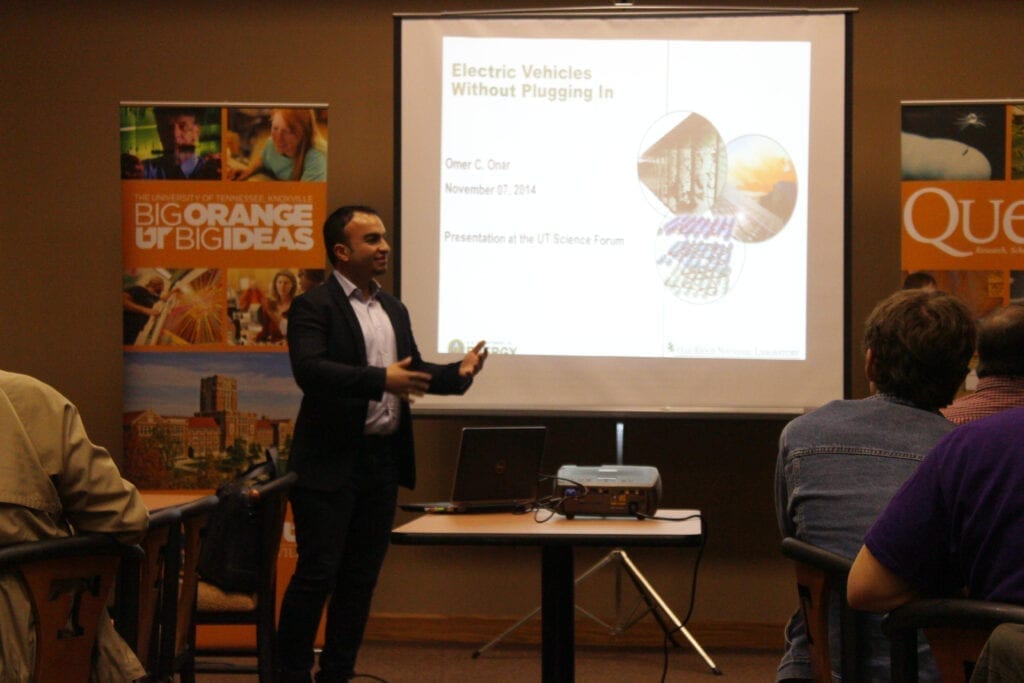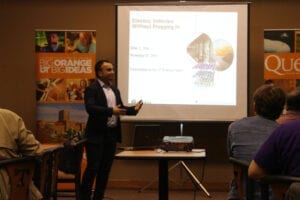UT science forum explains future of wireless charging vehicles
With the promoting of environmental awareness, people are spending more and more time focusing on clean energy and electric vehicles.. The UT Science Forum offered a lecture about wireless charging vehicles given by Omer Onar on Nov. 7.

Omer Onar of Oak Ridge delivers his speech about electric vehicles without plugging in

With the promoting of environmental awareness, people are spending more and more time focusing on clean energy and electric vehicles.. The UT Science Forum offered a lecture about wireless charging vehicles given by Omer Onar on Nov. 7.
Imagine charging an electric vehicle without plugging it in and even while it is in motion. Onar explains how electric vehicles can be charged without plugging in and how they can become easily accessible. Onar estimates that by 2020, electric vehicles (EV’s) will be much more common.
Onar now works with power electronics and electric vehicles inthe Oak Ridge National Laboratory, and he mentioned his idea about charging vehicles in motion in his lecture.
“It makes your life easier,” Onar said. “You can drive wherever you want. You’ll sustain your charge without needing to stop and recharge your battery every couple of hours.”
The vehicle can be charged by coils, and the more time you spend on those coils, the more charge you’ll get. The best quality of this design is convenience.
Installed under highway asphalt or concrete, charging stations would charge EV’s as they pass over them. Roadside vehicle sensors would identify the vehicle and battery to determine how much of a charge to apply. “You don’t have to do anything,” said Onar.
Chuck Thomas, a staff of UT, believes wireless charging is feasible.
“I think the wireless transmission can prevent accidents, and make people be more adapted to this kind of transmission.” said Thomas.
For more UT Science Forum information, click here.
Edited by Jessica Carr

